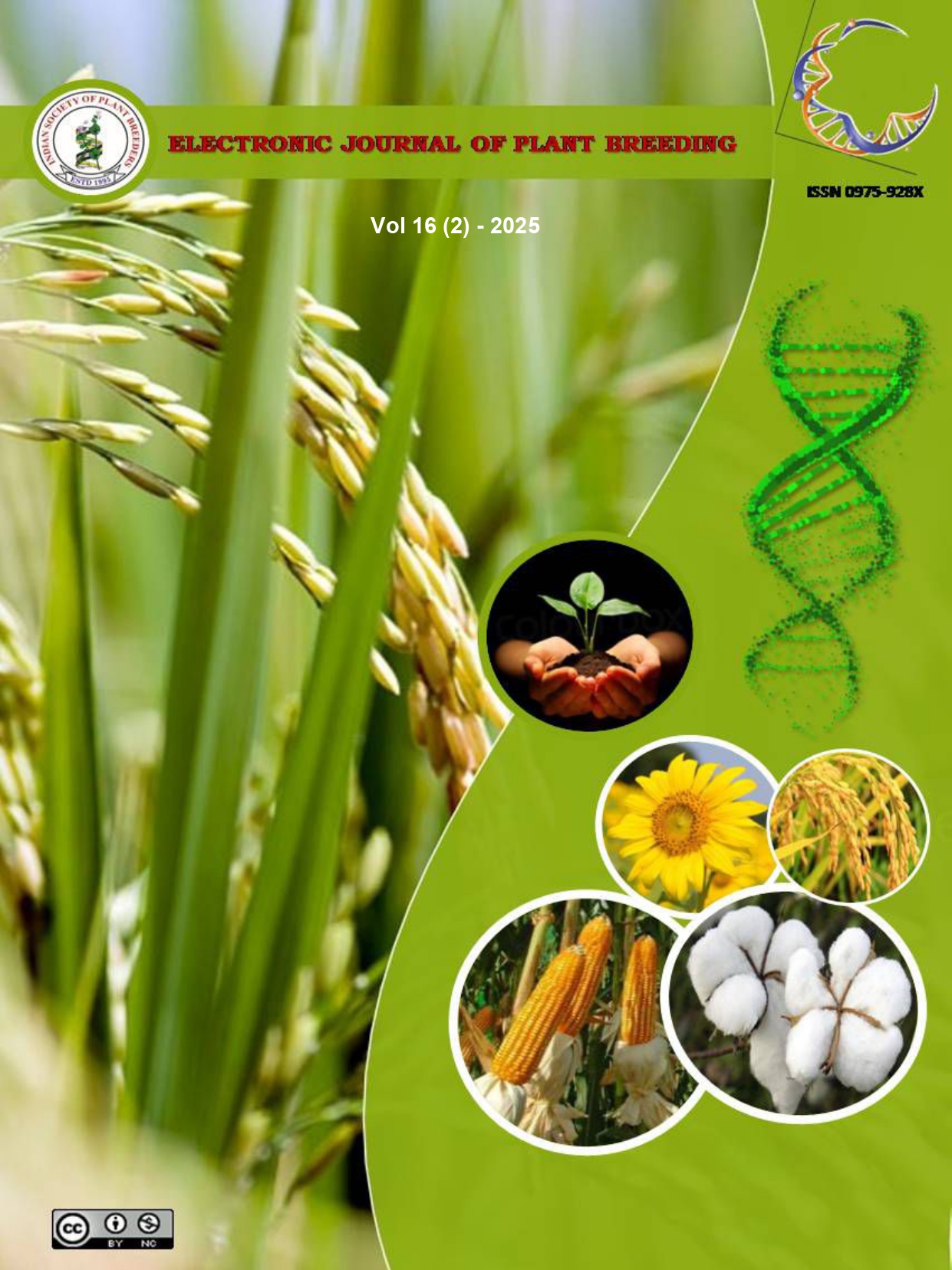Multi-environment evaluation of combining ability and heterosis for root yield and attributing traits in ashwagandha [Withania somnifera (L.) Dunal]
DOI:10.37992/2025.1602.030
Abstract
Ashwagandha (Withania somnifera), a vital medicinal crop, suffers from limited genetic diversity, which constrains its yield potential on a commercial scale. Exploiting combining ability and heterosis can serve as effective breeding strategies to enhance productivity and alkaloid content. A comprehensive study was conducted during Rabi 2022-2023, involving 60 hybrids, their parental lines and standard checks (JA-20, JA-134 and RVA-100), evaluated in a randomized block design across three diverse environments. Significant variability was observed for alkaloid content, dry root yield and its contributing traits. To refine parent selection, combining ability analysis was performed, revealing that both general combining ability (GCA) and specific combining ability (SCA) were significantly influenced by environmental interactions. Parents, including UWS-23, UWS-60, UWS-13, UWS-79, UWS-100, UWS-104, UWS-131, UWS-134, GP-49 and GP-51, exhibited significant positive general combining ability (GCA) effects for dry root yield, indicating the predominance of additive gene action. Among these, UWS-100 emerged as a promising general combiner for both dry root yield and total alkaloid content. Furthermore, specific cross combinations such as UWS-104 × UWS-60, UWS-132 × UWS-10, and UWS-92 × UWS-10 demonstrated high standard heterosis for dry root yield over the superior check variety JA-20 in environment E3. These hybrids also showed significant positive specific combining ability (SCA) effects, highlighting the role of non-additive gene action in trait expression. These findings highlight the potential of identified genotypes for use in hybrid breeding programs aimed 5at improving both yield and phytochemical composition in Ashwagandha. The integration of heterosis exploitation with combining ability analysis provides a strategic approach for developing superior Ashwagandha cultivars, offering significant scope for commercial cultivation and enhanced utility in the medicinal plant industry.
Keywords: Ashwagandha; Alkaloid content; Dry root yield; GCA; SCA; heterosis
Multi-environment evaluation of combining ability and heterosis for root yield and attributingandnbsp; traits in ashwagandha [Withania somnifera L. Dunal]
. 2025. Electronic Journal of Plant Breeding, 16 2, 174-186. Retrieved from https://ejplantbreeding.org/index.php/EJPB/article/view/5300It is certified that:
- The corresponding author is fully responsible for any disputes arising due to the publication of his/her manuscript.
- The article has been seen by all the authors who are satisfied with its form and content.
- The sequence of names of authors in the by-line is as per their relative contribution to this experiment, giving due credit to all scientists who made notable contribution to it.
- All the authors fully understand that inclusion of any other co-authors or exclusion of any co-authors is not possible once the article has been submitted to the journal.
- The corresponding author takes full responsibility for this article.
- The address of the organization where the research was conducted is given.
- The article is exclusive for this journal, and the results reported here have not been sent (and will not be sent during its consideration by this journal) for publication in any other journal.
- Authors agree to abide by the objective comments of referees and do agree to modify the article into a short note as per the recommendation, for publication in the Electronic Journal of Plant Breeding.
- If published in Electronic Journal of Plant Breeding, the copyright of this article would vest with the Indian Society of Plant Breeders, who will have the right to enter into any agreement with any organization in India or abroad engaged in reprography, photocopying, storage and dissemination of information contained in it, and neither we nor our legal heirs will have any claims on royalty.



